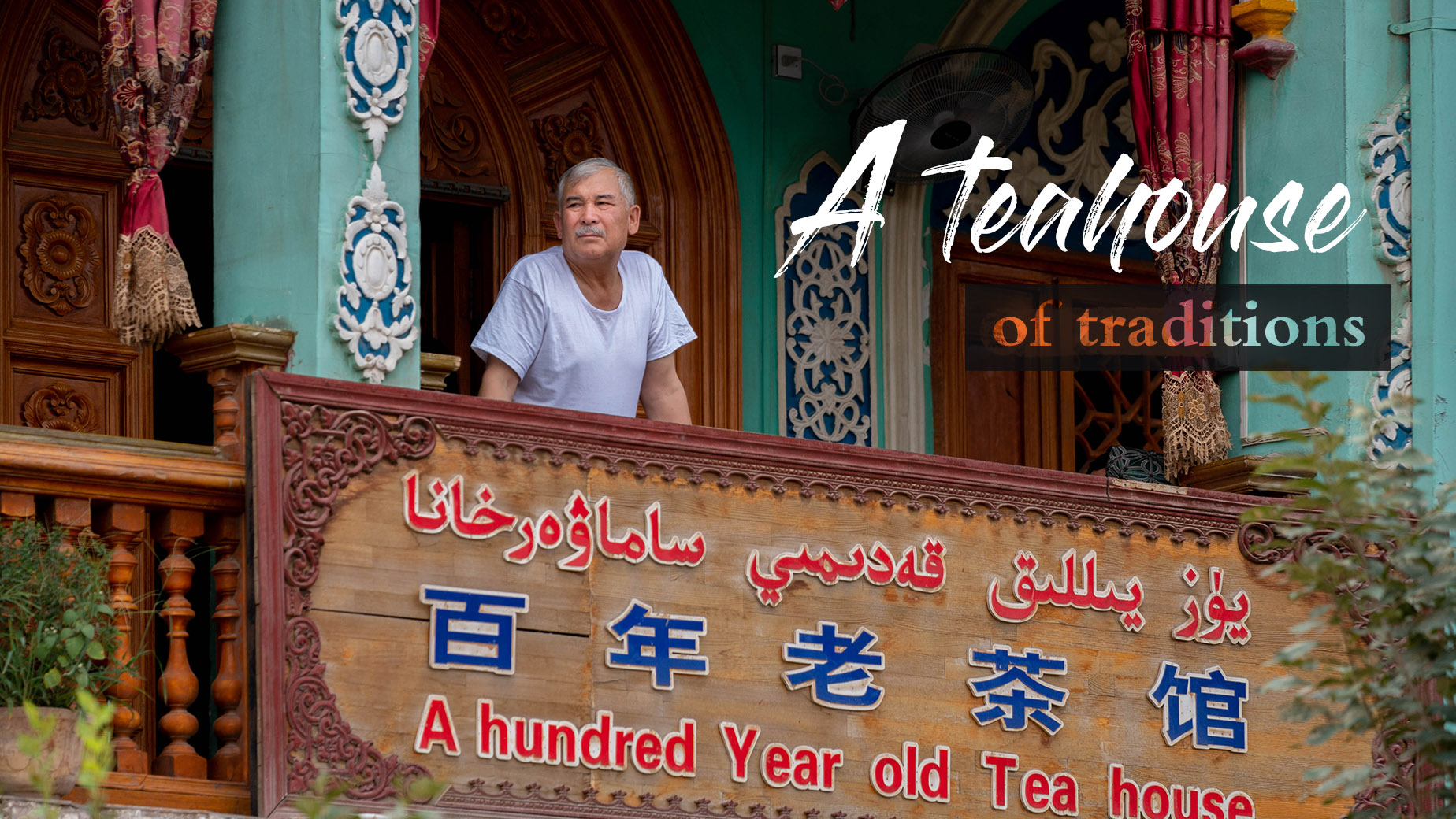

"One small pot of tea, please!" shouted Mamat Osman, 63, who has owned and operated the Ostangboyi Tea House for over a decade in Xinjiang's Kashgar – China's westernmost city.
The century-old teahouse – located in the city's old town atop a network of tangled, narrow alleyways lined with restaurants and stores – is the most popular among dozens here.
Walking up the wooden stairs to a balcony overlooking the central bazaar, this two-story rebuilt house gathers crowds of locals, as well as tourists dropping in, for conversations, laughs and sipping tea from their cups.
"People love hanging out here with friends while drinking a cup of tea," Osman told CGTN.
Thanks to the year-round dry weather and meat-heavy diet, drinking tea is a significant tradition in Xinjiang. Tea is served here in a small, ornate copper pot on a silver tray, alongside a painted porcelain bowl holding powdered sugar and a tiny ceramic cup. And of course, you can't miss the popular "nang" bread.
Sitting with legs crossed on a threadbare red rug, people listen or sing along with a man playing his "rawap." If they're lucky, they may be able to catch a glimpse of Osman's tea ritual.
Similar to Kashgar, where teahouses remain an important part of local life, many of the regions along the ancient Silk Road share tea-drinking customs and traditions. Tea, which is consumed copiously throughout the day, also plays an essential role in hospitality and business dealings.

Copyright © 2018 CGTN. Beijing ICP prepared NO.16065310-3
Copyright © 2018 CGTN. Beijing ICP prepared NO.16065310-3